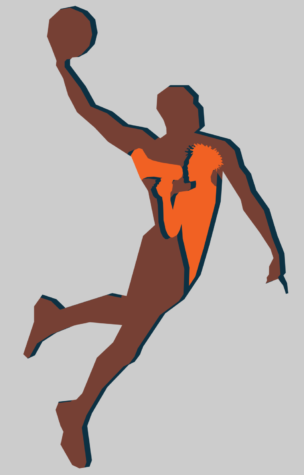Black activism’s history in sports
February 16, 2022

Sports protests have a long history in American athletics. In 1968, Tommie Smith and John Carlos threw up a black fist to illustrate their protest against racial discrimination and the unjust treatment of Black Americans. More than 50 years later, the death of George Floyd sparked mass unrest and a resurgence of activism in sports during the Summer of 2020. Sports has and will continue to be intertwined with domestic and global social movements.
While American society has progressed and improved in the past five decades, current sports protests maintain the same message and mission: “We hold these truths to be self-evident, that all men are created equal, that they are endowed by their Creator with certain unalienable Rights.” Unfortunately, many Black Americans are still fighting for the liberties penned in the Declaration of Independence.
As Black History Month comes to a close, it is necessary to reflect on the Black sports protests that forever changed the perception of racial discrimination in the U.S.
1968: Tommie Smith and John Carlos, 1968 Summer Olympic Games
1968 challenged the beliefs of hopefulness for many Black Americans and disenfranchised groups. The assasination of civil rights leader Martin Luther King Jr. created angst within the Black community. Frustration and despair grew after Civil Rights supporter and Democratic presidential candidate Robert Kennedy was assassinated in Los Angeles.Tensions increased with the Vietnam War, as 23% of troops were Black despite being only 11% of the US population.
The 200-meter dash final in the 1968 Summer Olympics became one of the most iconic days in Olympic history. After Tommie Watkins won the gold and John Carlos won silver, the two Black American medalists stood on the podium, shoeless, with black socks and gloves on, and raised their clenched fists in the air while bowing their heads.
Watkins and Carlos’ powerful statement became a symbol of the 1968 Olympics. Their protest was an act of solidarity for Black people around the world facing oppression. Watkins and Carlos went on the lead the Olympic Project for Human Rights, an organization protesting racial segregation and discrimination globally.
1992: Rodney King, Craig Hodges, Start of Awareness
More than two decades after the podium protest, Black Americans remained systematically oppressed. The War on Drugs, initiated by the Nixon administration, continued through the 1970s, 80s and 90s.
Federal law enforcement policies, prosecutorial practices and legislation during the War on Drugs led to disproportionate rates of police brutality, arrest, conviction and imprisonment for Black Americans facing drug possession and distribution charges. The average Black American male was and remains five times more likely to be arrested than a white male in the U.S. With increased scrutiny from law enforcement, beatings like that of Rodney King occurred.
On March 3, 1991, Rodney King was stopped by police for a traffic violation and was subsequently beaten by Los Angeles police officers. Before King’s beating, many Black Los Angeles residents had complained about the treatment they received from the hands of LAPD.
A video of King’s beating surfaced a year later, when the four officers were acquitted in April 1992. After their acquittal, Los Angeles erupted in riots that killed 60 people and led to more than 7,000 arrests and more than 2,000 injured residents.
In the sports world, many Black American athletes were angry and concerned by the treatment of Black Americans and the upset in the Black community.
In the 1990s, Craig Hodges played a key role in the first two championships for the Chicago Bulls by being sharpshooter beyond the arc. When the Bulls won the NBA championship in 1992, Hodges went to the White House wearing a dashiki.
During his visit, Hodges handed former president George H. W. Bush a letter in which he described his disagreement with Bush’s handling of racial discrimination in the United States. Immediately after this interaction, the Bulls released Hodges. Despite this, Hodges continued to use his professional platform to illustrate the injustices against Black people in the US.
2010s to present: Police Brutality, Black Lives Matter and George Floyd
Since the 1990s, social media and internet access have increased the ability to document and disseminate evidence of brutality and racism against Black Americans. Anyone with access to the internet can see and understand from second-hand experience the treatment of Black Americans compared to their white counterparts.
Many Black athletes use their popularity and followings on social media platforms to illustrate the distress of the Black community. Recently, the NFL and NBA announced their support of the Black Lives Matter movement. Various professional sports teams created BLM uniforms in solidarity of George Floyd’s death in 2020.
The current support of BLM marks a stark change from the sports world’s treatment of Colin Kaepernick’s advocacy and kneeling for the national anthem.
Despite some progress and the changing tides in sports activism, there is much to be done in establishing equality and equity for all.






















Leave a Comment